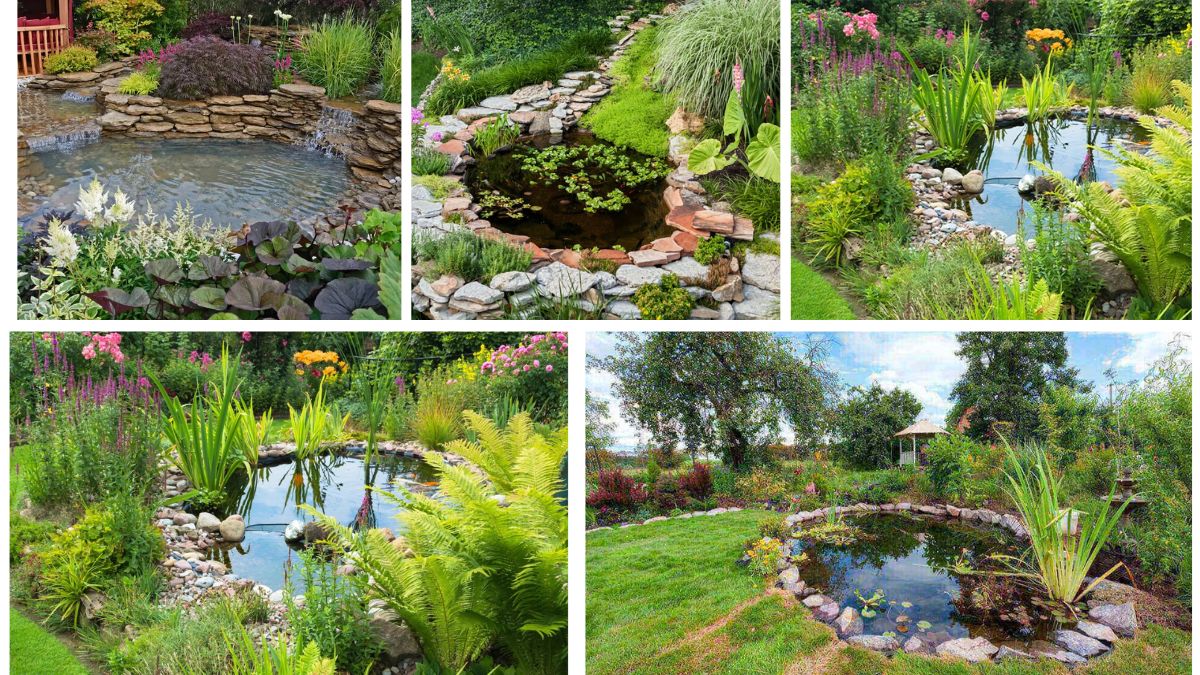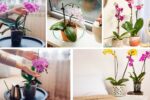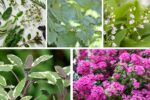A backyard pond or water feature is more than just an aesthetic upgrade—it’s a living ecosystem that can bring serenity, attract wildlife, and create a natural focal point in your garden. The gentle trickle of water paired with vibrant aquatic plants turns even a modest outdoor space into a retreat. Choosing the right plants is crucial, as they not only add beauty but also help maintain water quality, provide shade for fish, and keep the pond ecosystem balanced.
If you’re planning or already maintaining a pond, here are five plants perfect for backyard ponds and water features that will bring color, texture, and ecological benefits to your space.
1. Water Lilies (Nymphaea spp.) – The Quintessential Pond Plant
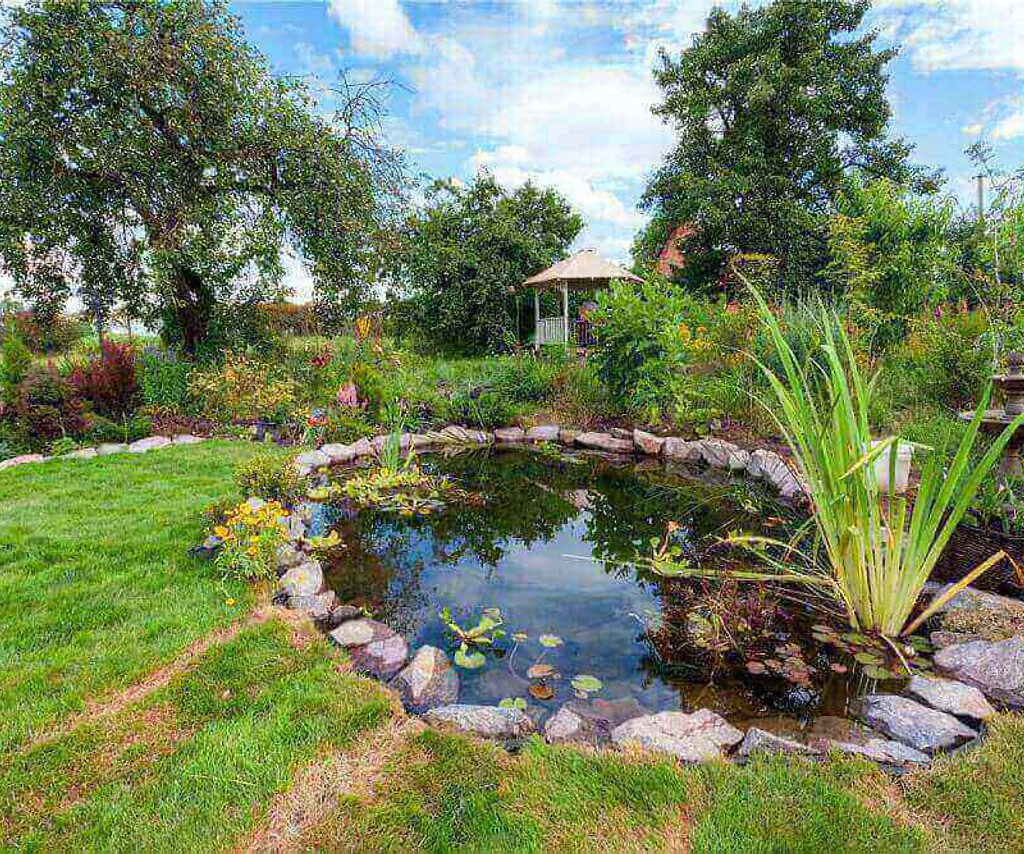
Few plants capture the charm of a backyard pond like water lilies. Their broad, floating leaves and delicate, jewel-toned blooms bring instant elegance to any water feature. Available in a variety of colors—from classic white to bold red and yellow—water lilies create a romantic, almost magical look.
Benefits:
- Aesthetic Appeal: Their large blooms float gracefully on the water, adding a classic touch.
- Shade and Cooling: The lily pads cover the water’s surface, keeping it cooler and reducing algae growth.
- Habitat for Wildlife: Fish and frogs use the pads as hiding spots and shelter.
Care Tips:
- Plant lilies in containers and sink them into shallow sections of the pond (12–24 inches deep).
- Provide at least 6 hours of sunlight daily for optimal blooms.
- Remove dead leaves and spent flowers to keep the water clean.
Water lilies are ideal for both large and small ponds, offering long-lasting blooms from late spring to early autumn.
2. Lotus (Nelumbo nucifera) – The Exotic Showstopper
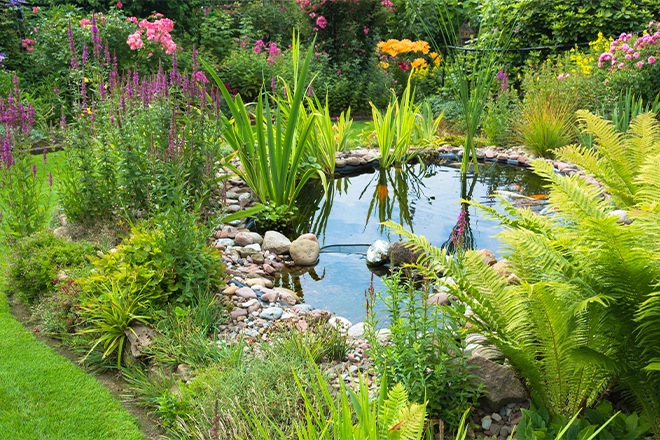
The lotus flower is often associated with spirituality and serenity, making it a symbolic addition to water gardens. Its enormous, round leaves rise above the water’s surface, while its bold, fragrant blossoms command attention. Though often confused with water lilies, lotuses stand taller and add dramatic height to your pond.
Benefits:
- Visual Drama: Their towering leaves and large blooms create a tropical vibe.
- Fragrance: Lotus flowers emit a sweet, subtle scent that enhances the garden experience.
- Cultural Symbolism: In many cultures, the lotus represents purity and rebirth.
Care Tips:
- Plant lotus tubers in wide containers and submerge them in shallow, still water (around 6–12 inches deep).
- They thrive in full sunlight—at least 6–8 hours daily.
- In colder climates, overwinter the tubers indoors or protect them from freezing temperatures.
The lotus is perfect for gardeners who want an exotic, centerpiece plant that draws admiration and creates a tranquil setting.
3. Pickerel Rush (Pontederia cordata) – A Pollinator Magnet
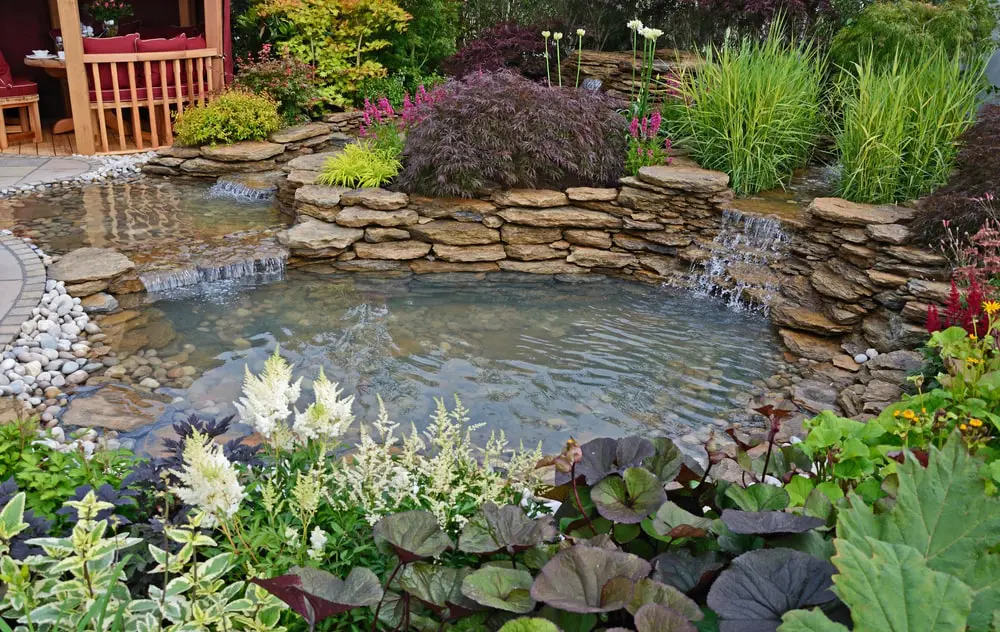
If you want a plant that adds both color and biodiversity, pickerel rush is an excellent choice. This hardy, marginal plant grows upright along the pond’s edges, producing spikes of purple-blue flowers throughout the summer. Its lush green foliage and vibrant blooms attract pollinators like bees and butterflies.
Benefits:
- Attracts Wildlife: Provides nectar for pollinators and shelter for small pond creatures.
- Low Maintenance: Hardy and adaptable to various pond conditions.
- Erosion Control: Helps stabilize pond edges with its dense root system.
Care Tips:
- Plant pickerel rush in pots or directly into the pond margins, about 6–12 inches deep.
- They prefer full sun but tolerate partial shade.
- Prune back dead foliage in fall to encourage healthy spring growth.
Pickerel rush works beautifully as a background plant, softening pond edges while enhancing ecological balance.
4. Water Hyacinth (Eichhornia crassipes) – The Floating Beauty
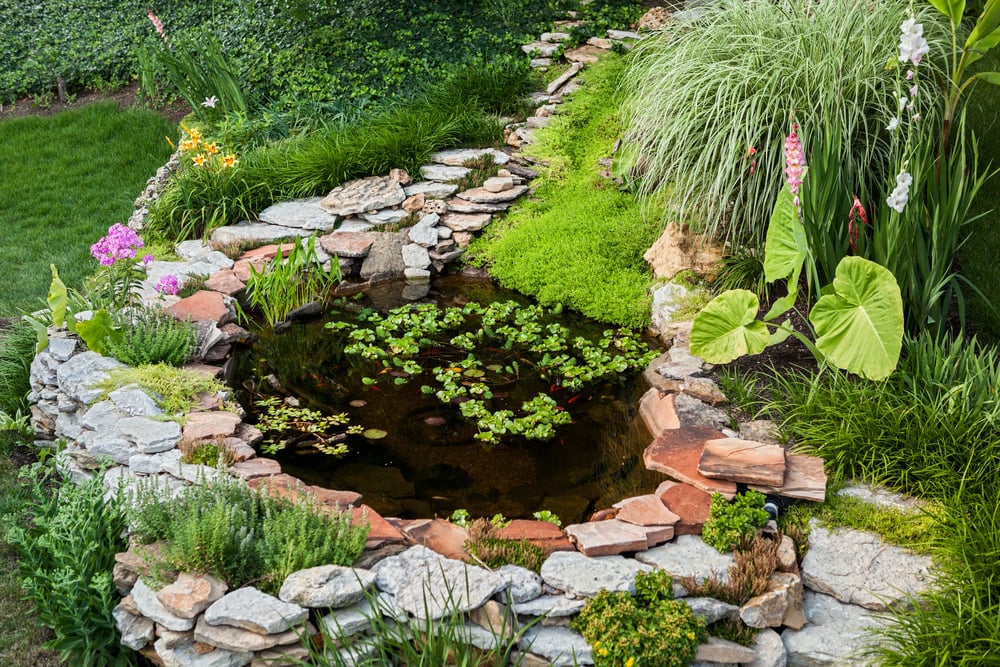
Known for its striking lavender-blue flowers and glossy, bulbous leaves, water hyacinth is one of the most popular floating plants for ponds. Its ability to drift across the water makes it both decorative and practical, as it absorbs excess nutrients and helps keep algae at bay.
Benefits:
- Natural Filtration: Removes impurities and maintains water clarity.
- Floating Cover: Offers shade for fish and prevents water from overheating.
- Quick Growth: Can rapidly cover open water, adding lush greenery.
Care Tips:
- Place water hyacinths freely on the water’s surface; no planting medium is required.
- They thrive in full sun but need occasional thinning to prevent overcrowding.
- In colder climates, treat them as annuals or overwinter them indoors.
Note: Water hyacinth is invasive in some regions. Check local regulations before introducing it to your pond.
When managed responsibly, water hyacinth is an excellent choice for a floating, low-maintenance plant that beautifies and cleans your pond.
5. Horsetail Reed (Equisetum hyemale) – The Architectural Accent
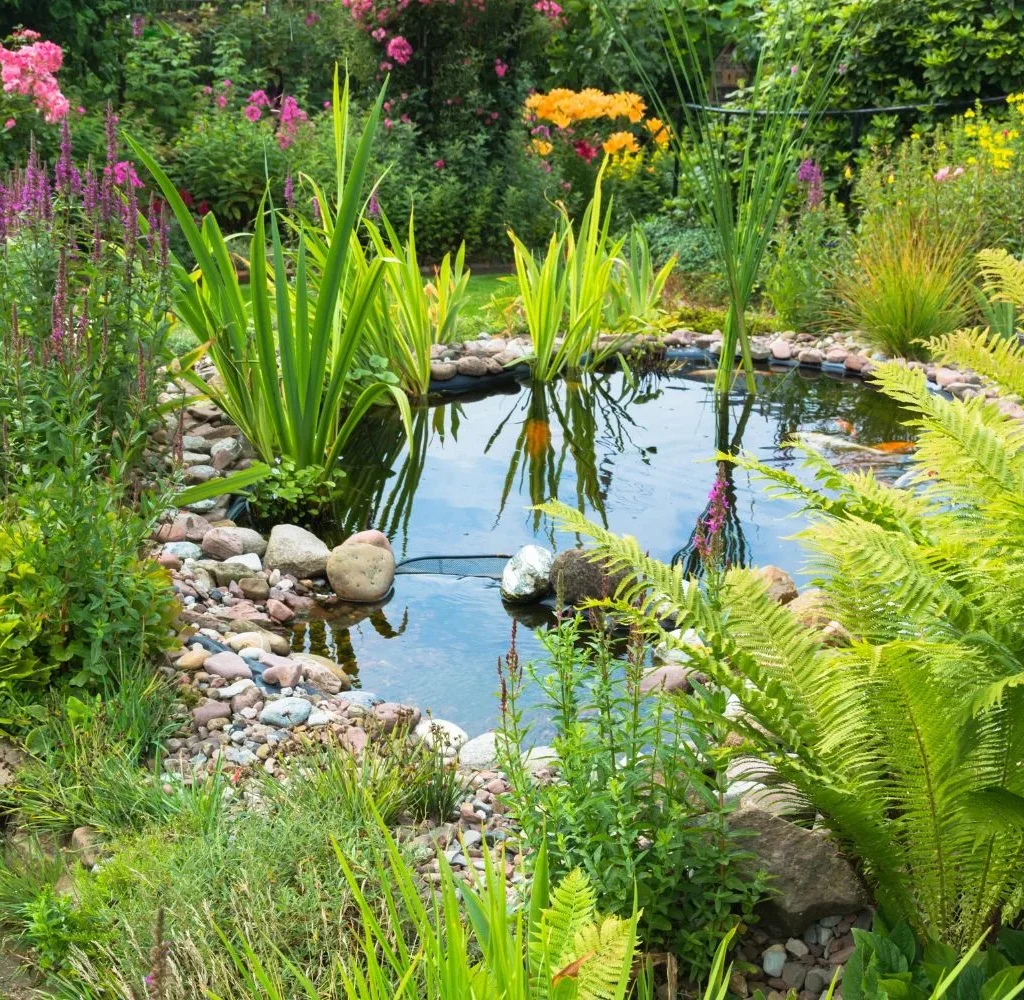
For a bold, modern touch, horsetail reed is an outstanding addition. With its tall, slender, bamboo-like stems, it brings vertical structure and texture to ponds and water features. It’s particularly striking in contemporary garden designs where clean lines and minimalism are emphasized.
Benefits:
- Unique Appearance: Adds architectural interest and height.
- Low Care Needs: Hardy and adaptable to various conditions.
- Evergreen Quality: In mild climates, it stays green year-round.
Care Tips:
- Plant horsetail reed in containers submerged in shallow water (2–4 inches deep) to control its spread.
- Prefers full sun but tolerates partial shade.
- Trim back older stems to maintain a tidy look.
Since horsetail reed is vigorous, growing it in pots prevents it from taking over your pond. It’s an excellent accent plant for modern or minimalist landscapes.
Additional Tips for a Healthy Pond Ecosystem
Adding the right plants is just one part of maintaining a thriving pond. Here are some essential tips:
- Balance Plant Types: Use a mix of floating, marginal, and submerged plants to create a balanced ecosystem.
- Control Growth: Regularly thin out fast-growing plants like water hyacinth to prevent overcrowding.
- Clean Debris: Remove fallen leaves and decayed matter to keep water clear.
- Fish Compatibility: Ensure chosen plants provide shade and oxygen for fish without overwhelming their space.
- Sunlight and Placement: Position plants based on their light needs—floating plants need full sun, while some marginals tolerate shade.
Conclusion
Designing a backyard pond or water feature is not just about adding water; it’s about curating a living landscape. By carefully choosing plants like water lilies, lotus, pickerel rush, water hyacinth, and horsetail reed, you can create a balanced, beautiful, and ecologically vibrant pond. Each plant brings unique benefits, from dramatic blooms and structural interest to natural filtration and wildlife support.
Whether you’re aiming for a romantic, exotic, or modern look, these five plants offer the perfect foundation for transforming your pond into a serene retreat. With the right care, your backyard water garden will
